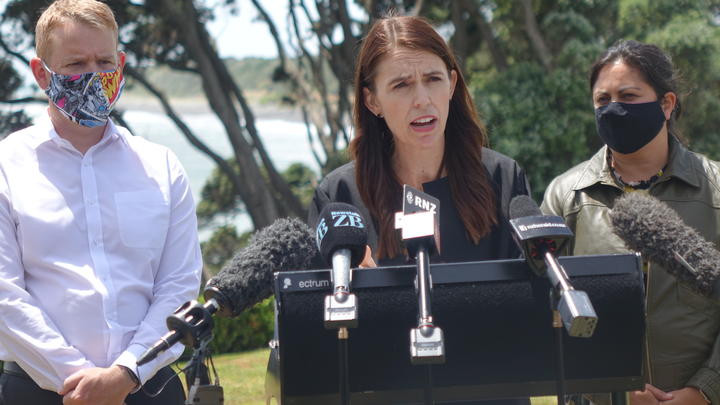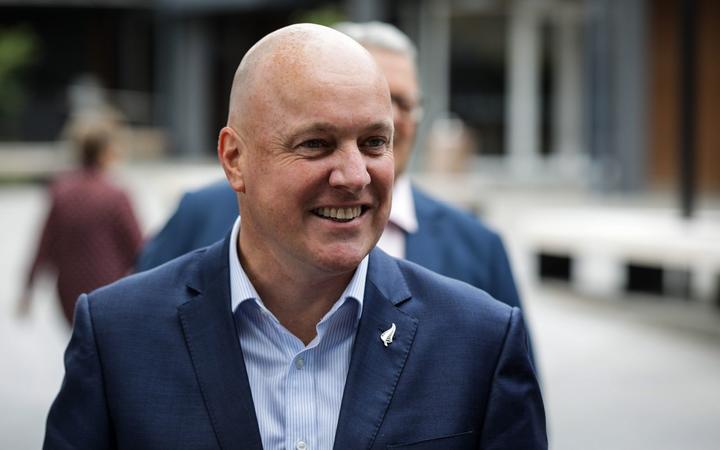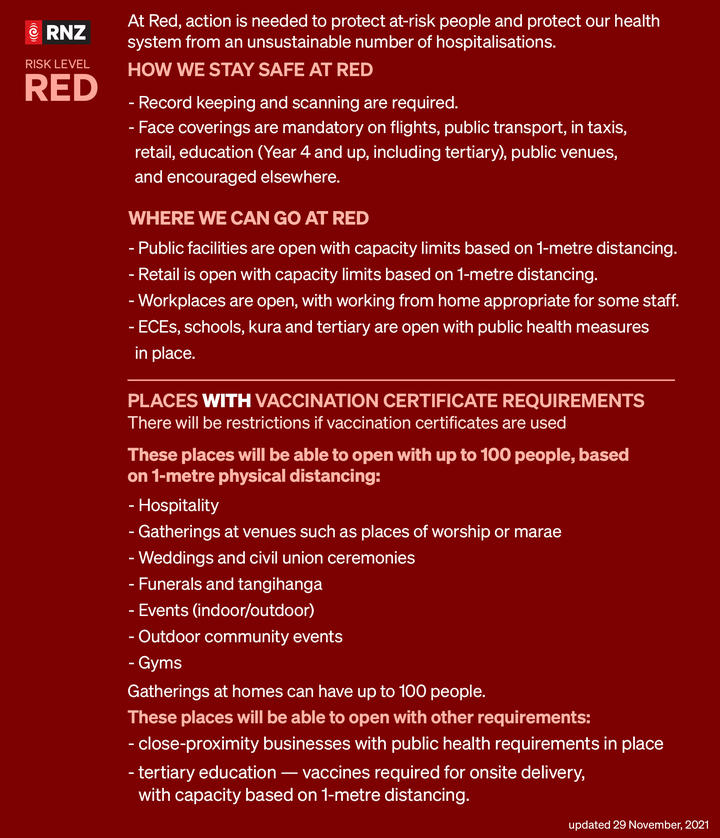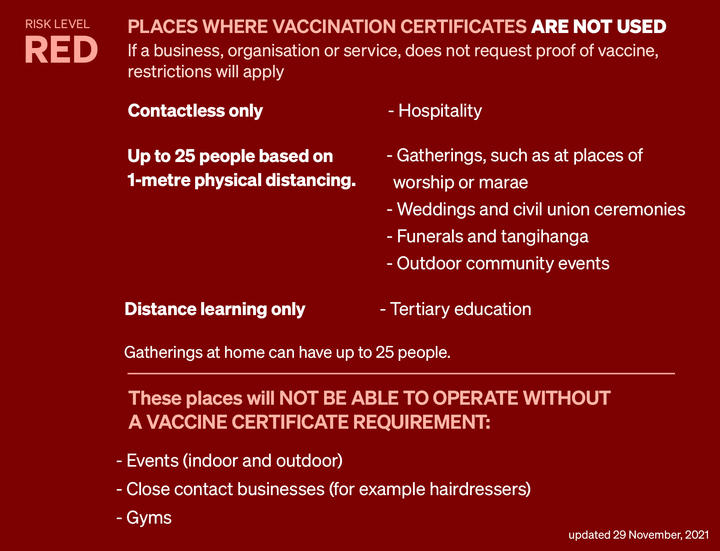New Zealanders are being urged to prepare for potentially thousands of daily Covid-19 infections once the Omicron variant starts spreading in the community.
 Prime Minister Jacinda Ardern, with Covid-19 Response Minister Chris Hipkins and Associate Health Minister Ayesha Verrall, said the country would move to the red traffic light setting once Omicron was spreading in the community. Photo: RNZ / Robin Martin
Prime Minister Jacinda Ardern, with Covid-19 Response Minister Chris Hipkins and Associate Health Minister Ayesha Verrall, said the country would move to the red traffic light setting once Omicron was spreading in the community. Photo: RNZ / Robin Martin
Prime Minister Jacinda Ardern has set out the way ahead at Labour’s annual caucus retreat in New Plymouth.
But Opposition parties are accusing the government of making up the plan as it goes along.
Omicron is knocking on the door and loudly with dozens of cases picked up in Managed Isolation and Quarantine (MIQ) every day.
The variant is already slowly seeping through the border and it’s only a matter of time before it starts to spread in the community.
“We know that we will experience in New Zealand cases at a level we haven’t seen before,” Ardern said.
The modelling varies, but Ardern said once Omicron made its way into the community there could be between 1000 and 10,000 new infections every day.
“We won’t stop Omicron but we can try and slow it down. So that rather than dealing with a tidal wave of cases, we work hard to keep cases as low as possible.”
 National Party leader Chris Luxon said it felt like the government’s response had been made up “on the fly”. Photo: RNZ / Nate McKinnon
National Party leader Chris Luxon said it felt like the government’s response had been made up “on the fly”. Photo: RNZ / Nate McKinnon
In an effort to the spread, all of New Zealand will remain at the orange traffic light setting for now.
As soon as there’s evidence of community transmission, the country will move to the more restrictive red setting within 24 to 48 hours.
That means gathering limits and increased mask use for the vaccinated and even tougher measures for those who haven’t had the jab.
“Red does not mean lockdowns or regional boundaries and business remains open,” Ardern said.
Plans to manage the high number of cases and changes to testing requirements are still being finalised.
Deputy Prime Minister Grant Robertson said until now the government had helped manage those infected with Covid-19 but that was set to change.
“There will be a need for people to be managing more of their own care and they should be able to because they won’t be as ill.
“If you are ill and in a vulnerable position of course we’ll continue to look after you, but I think that’s part of talking about it now before it’s here is to give people the idea that it will be a different thing to deal with,” Robertson said.
Opposition parties are slamming the Omicron preparation, saying the government’s scrambling to come up with a plan.
National Party leader Chris Luxon said “it feels like it’s being made up on the fly and on the go.”
ACT leader David Seymour said there was nothing in the government’s plan other than to move to red, which will have little impact on Omicron.
“Like many New Zealanders, I listen closely to the prime minister for a plan against Omicron but all I heard was the sound of crickets.”
The government is prepared, Ardern said, and it will reveal more details about its plan next week.
But Luxon told Morning Report there was no depth and detail to the plan for tackling Omicron, for example on the number for ICU beds or rapid antigen testing.
The 4.6 million rapid antigen tests in the country would be used immediately, Luxon said, and though the prime minister has said tens of millions more were on order, “when are they here, why aren’t they here?”
“They’re not widely available in points of distribution across New Zealand as they are in Australia, as they are in many other countries.”
“There’s a whole bunch of questions, the detail’s just not there.”


